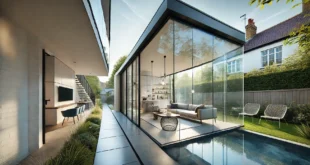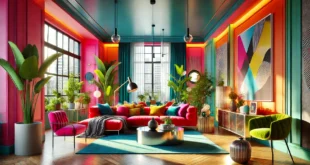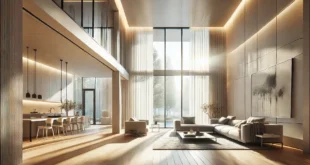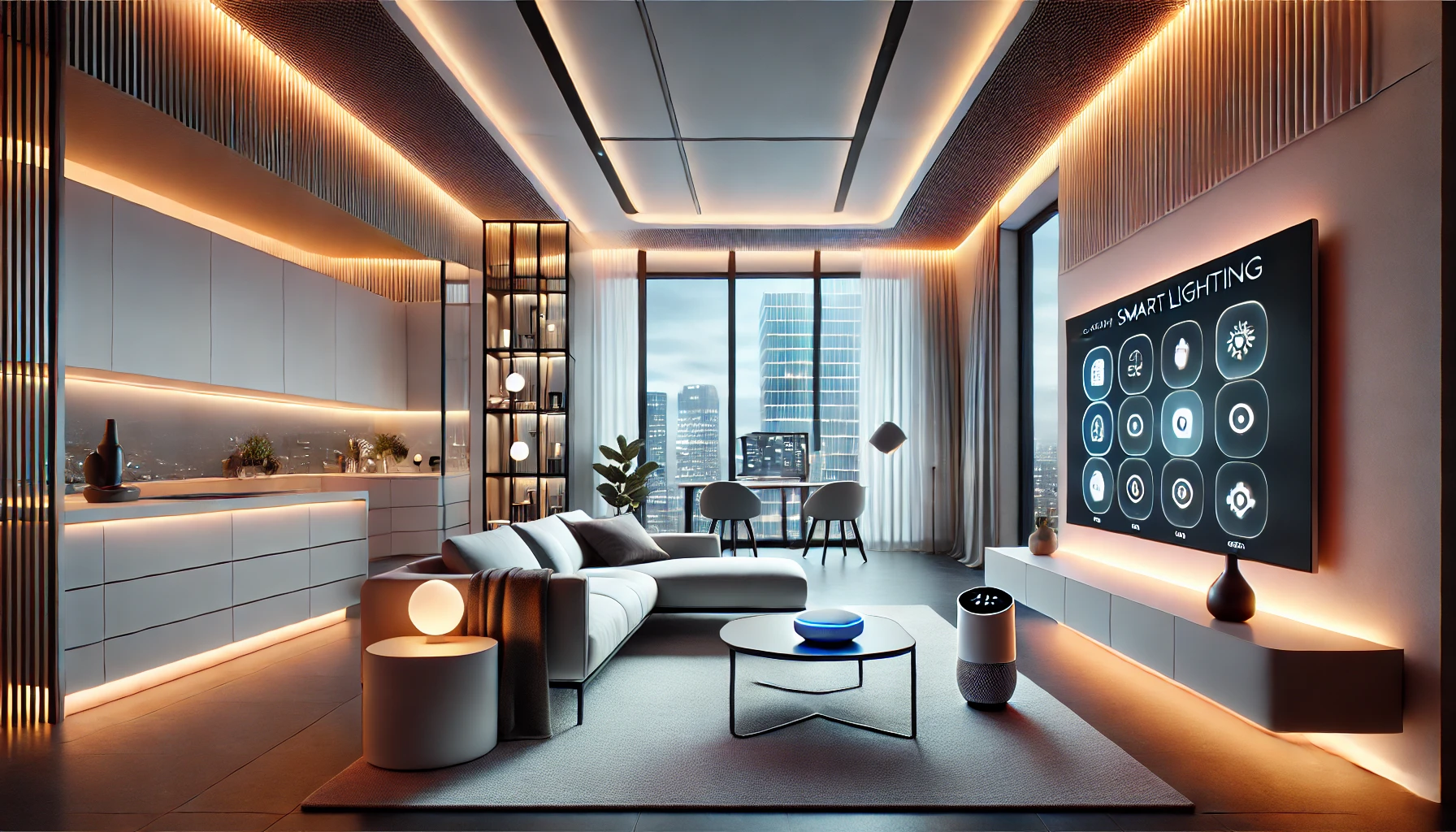
Welcome to the future of home design—smart lighting. As a professional home designer, I understand that lighting is one of the most critical elements in setting the tone and atmosphere of a space. But in today’s connected world, smart lighting goes beyond simple ambiance. It offers energy efficiency, convenience, and complete control at your fingertips. With smart lighting design, you can enhance the functionality and style of your home while embracing the latest in home automation technology.
In this article, we’ll explore how you can transform your living space with smart lighting. From setting up your system to choosing the right fixtures, we’ll cover everything you need to know to create a cutting-edge, energy-efficient lighting solution tailored to your lifestyle. Let’s dive into the most innovative smart lighting design ideas for your home.
Smart Lighting Design Ideas: Enhancing Style and Function

Personalized Lighting Scenes
Smart lighting allows you to create personalized lighting scenes that match your lifestyle. Whether you want to set a cozy mood for movie nights or energize your mornings with bright, crisp light, smart lighting systems let you customize every room’s ambiance with a single touch.
You can also schedule lighting scenes based on your daily routine, ensuring your home is always perfectly lit. This adds both convenience and comfort to your smart lighting design.
Energy-Efficient Smart Lighting
Energy efficiency is a significant advantage of smart lighting. With LED bulbs and the ability to control lights remotely, you can reduce energy consumption by ensuring lights are only used when needed. Smart sensors can detect when a room is empty and automatically turn off the lights, saving both energy and money.
Energy-efficient lighting not only reduces your carbon footprint but also lowers utility bills, making it a sustainable and cost-effective option for homeowners.
How to Set Up Smart Lighting: A Step-by-Step Guide
Choose the Right Smart Lighting System
When setting up smart lighting, the first step is choosing the right system for your needs. Popular options include Philips Hue, LIFX, and Kasa Smart. These systems are compatible with various smart home ecosystems like Alexa, Google Home, and Apple HomeKit, allowing you to control your lights with voice commands or an app.
Consider your home’s existing infrastructure and whether you want a hub-based system (which offers more control) or a hub-free system (which is easier to set up).
Install Smart Light Fixtures and Bulbs
Once you’ve selected a system, it’s time to install your smart light fixtures and bulbs. Most smart bulbs can be easily screwed into existing light sockets, while smart light fixtures may require professional installation. Be sure to follow the manufacturer’s instructions for proper setup.
After installation, connect your smart lighting system to your home’s Wi-Fi network, and use the app to control your lights remotely. You’ll also be able to set schedules, adjust brightness, and create lighting scenes.
Best Smart Lighting Systems for Home Automation
Philips Hue: A Versatile Smart Lighting Solution
Philips Hue is one of the most popular and versatile smart lighting systems on the market. It offers a wide range of products, from smart bulbs and light strips to outdoor lighting. With Philips Hue, you can customize the color, brightness, and schedule of your lights to create the perfect ambiance in every room.
It’s compatible with voice assistants like Alexa and Google Assistant, making it easy to control your lights with simple voice commands.
LIFX: Bright and Colorful Lighting Options
LIFX offers a variety of bright, colorful smart lighting solutions that don’t require a hub for setup. Their Wi-Fi-enabled bulbs are known for producing vibrant colors and high brightness levels. With the LIFX app, you can adjust the color and brightness of your lights, set schedules, and even sync your lighting with music or movies.
LIFX also integrates with popular smart home platforms, providing seamless control and automation for your lighting system.
Smart Lighting for Home Automation: Enhance Your Living Experience

Integrating Smart Lighting with Alexa
Integrating your smart lighting system with Alexa allows for hands-free control. You can use voice commands to turn lights on and off, dim them, or change their color. Simply connect your smart lighting system to Alexa through the app, and you’ll be able to control all your lights with simple voice prompts.
This integration also lets you group lights by room, so you can control multiple lights at once, making your smart home more efficient and convenient.
Using Smart Lighting for Home Security
Smart lighting plays a vital role in home security. With features like motion-activated lights, you can deter potential intruders by illuminating key areas of your home when movement is detected. You can also control your lights remotely while away, giving the appearance that someone is home.
Some smart lighting systems can even be integrated with security cameras, allowing you to automate your lighting in response to specific security triggers.
Smart Lighting Trends 2024: What’s New?
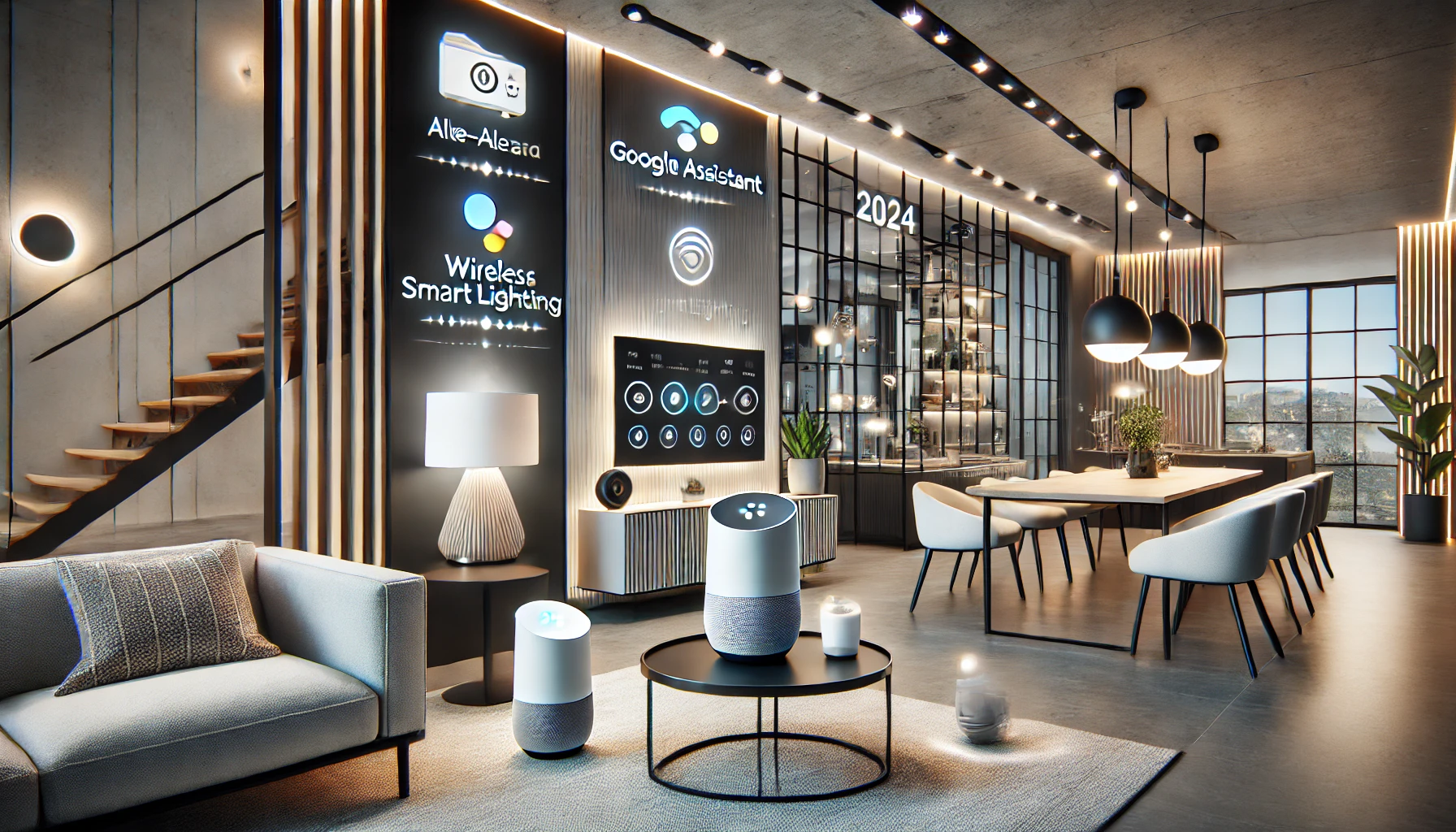
Voice-Activated Lighting
Voice-activated lighting continues to grow in popularity as more homeowners embrace smart home technology. With Alexa, Google Assistant, and Siri, you can control your lighting with simple voice commands. This hands-free feature is especially convenient in kitchens, bathrooms, and living spaces where manual control may not be ideal.
Voice-activated lighting is also a great addition for those looking to increase accessibility in their homes, providing an effortless way to manage lighting.
Wireless Smart Lighting Design
Wireless smart lighting is one of the top trends for 2024, offering greater flexibility in installation and design. Wireless systems allow you to place lights anywhere without the need for complicated wiring. This makes it easier to add smart lighting to any room, from bedrooms and living rooms to outdoor patios.
With wireless lighting, you can control lights remotely, ensuring convenience and efficiency while maintaining a clean, uncluttered look in your home.
Energy-Efficient Smart Lighting: Save Energy, Save Money
LED Lighting for Efficiency
LED lighting is a cornerstone of smart lighting systems, providing excellent energy efficiency compared to traditional incandescent bulbs. LED bulbs use significantly less energy, last longer, and produce less heat, making them ideal for smart homes focused on sustainability.
Pairing LED lighting with smart controls allows you to optimize your energy use, turning lights on and off only when needed and adjusting brightness based on time of day.
Smart Sensors for Automated Control
Smart sensors enhance energy efficiency by automating your lighting system. Motion sensors can turn lights on when someone enters a room and turn them off when the room is empty, reducing wasted energy. Additionally, light sensors can adjust brightness based on the amount of natural light in a room.
These automated controls help reduce energy consumption, making your home more eco-friendly while lowering your electricity bills.
Transform Your Home with Smart Lighting

Smart lighting design is a game-changer for modern homes, offering the perfect blend of convenience, energy efficiency, and style. Whether you’re looking to enhance your home’s security, create a more personalized living environment, or embrace the latest home automation trends, smart lighting has something for everyone. With a wide range of options to choose from, it’s never been easier to integrate this cutting-edge technology into your home.
Ready to revolutionize your home with smart lighting? Contact us today for expert advice on creating a smart lighting system that fits your lifestyle. Let’s work together to design a brighter, smarter future for your home.
Let Us Help You Create the Perfect Smart Home
Thank you for exploring the exciting world of smart lighting design. We’re passionate about helping homeowners create efficient, stylish, and innovative spaces. Our team of experts is ready to assist you in setting up the perfect smart lighting system that enhances your home’s comfort and convenience.
If you’re ready to take your home’s lighting to the next level, don’t hesitate to reach out to us. Let’s bring your vision to life with smart lighting solutions that are tailored to your needs and preferences.
F.A.Q: Smart Lighting Design
What is smart lighting design?
Smart lighting design involves using connected lighting systems that can be controlled remotely or automatically. These systems offer features like dimming, color changes, scheduling, and voice control, providing convenience and energy efficiency.
How does smart lighting work?
Smart lighting works by connecting light fixtures or bulbs to a home network, usually via Wi-Fi or a hub. Users can control the lights through a mobile app, voice commands, or smart home systems like Alexa or Google Assistant.
What are the benefits of smart lighting?
Smart lighting offers numerous benefits including energy savings, convenience, enhanced security, and the ability to create customizable lighting scenes. Users can control their lights remotely and set schedules, making their home more efficient and secure.
Can smart lighting be integrated with other smart home devices?
Yes, smart lighting systems can be integrated with other smart home devices like security cameras, thermostats, and voice assistants. This integration allows for seamless automation and control of multiple devices through a single platform.
What are the best smart lighting systems available?
Some of the best smart lighting systems include Philips Hue, LIFX, and Kasa Smart. These systems offer a wide range of products and are compatible with popular smart home ecosystems like Alexa, Google Assistant, and Apple HomeKit.
How do I set up a smart lighting system?
Setting up a smart lighting system involves installing smart bulbs or fixtures, connecting them to your Wi-Fi or hub, and syncing them with a mobile app. Once connected, you can control the lights remotely, create schedules, and customize settings.
Can smart lighting save energy?
Yes, smart lighting can save energy by using energy-efficient LED bulbs and allowing users to schedule lights or turn them off remotely. Smart sensors can also detect when rooms are empty and automatically switch off the lights to prevent waste.
Is smart lighting expensive to install?
The cost of smart lighting varies depending on the brand and the complexity of the system. Basic smart bulbs are relatively affordable, while more advanced systems with integrated hubs, sensors, and voice control may require a higher initial investment.
What is the difference between hub-based and hub-free smart lighting?
Hub-based smart lighting systems require a central hub to connect all the smart devices, offering more advanced features and control. Hub-free systems connect directly to Wi-Fi, making them easier to set up but potentially less robust in terms of control and automation.
Can smart lighting be controlled with voice commands?
Yes, smart lighting can be controlled with voice commands through devices like Amazon Alexa, Google Assistant, and Apple Siri. Simply connect your smart lighting system to the voice assistant, and you can control your lights with verbal prompts.
What are some popular smart lighting trends?
Popular smart lighting trends include wireless lighting systems, voice-activated control, energy-efficient LED solutions, and integration with home security systems. Customizable color and scene settings are also becoming increasingly popular for creating personalized home atmospheres.
Can I control smart lighting when I’m away from home?
Yes, smart lighting allows for remote control via mobile apps. Whether you’re at work or on vacation, you can use your smartphone to adjust your home’s lighting, turn lights on and off, or create the illusion that someone is home for added security.
How can smart lighting improve home security?
Smart lighting can improve home security by integrating with motion sensors and security cameras. Lights can be set to turn on when motion is detected, or you can schedule lights to mimic occupancy while you’re away, deterring potential intruders.
What is the lifespan of smart lighting bulbs?
Smart lighting bulbs, particularly LED bulbs, typically have a long lifespan, often lasting 15,000 to 25,000 hours. This means they can last up to 15 years depending on usage, offering a long-term energy-efficient solution for your home.
What types of rooms benefit most from smart lighting?
Smart lighting can benefit any room in the house, but living rooms, bedrooms, kitchens, and outdoor spaces tend to see the most advantages. In these areas, customizable lighting scenes, voice control, and automation can greatly enhance convenience and ambiance.
 Home Designing Get expert home decor tips and design inspiration at HomeDesigning.blog. Transform your living spaces with trending styles and DIY ideas!
Home Designing Get expert home decor tips and design inspiration at HomeDesigning.blog. Transform your living spaces with trending styles and DIY ideas!
